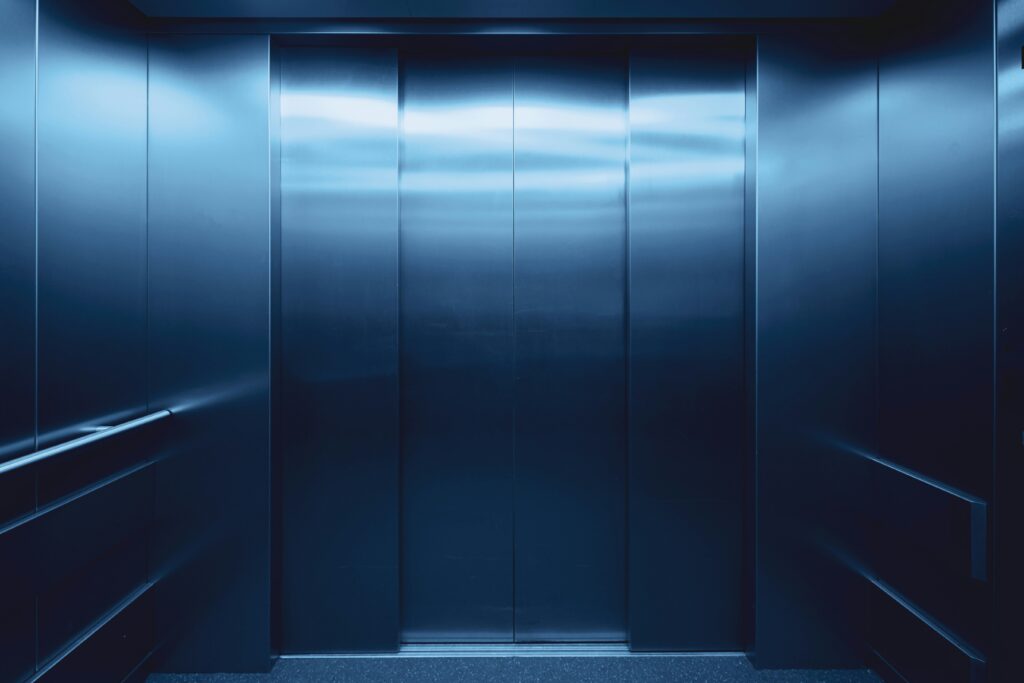Related Posts
Mental anguish cases are among the most disputed in law. Some emotional distress claims deserve serious compensation, while others may seem like attempts to profit from the courtroom. Despite differing views, mental distress cases are real and increasingly common in our legal systems. One key type of lawsuit is negligent infliction of emotional distress (NIED). If you’re curious about NIED cases and how they allow individuals to seek compensation for mental anguish, keep reading.
Elevator Passengers Face Scary Situation Mid-Ride
When we think of distressing situations, we often talk about vehicle crashes and assaults. Surprisingly, this viral video captures the moments when an elevator begins to break down mid-ride while it carries passengers.
The clip above shows the inside of an elevator moving upwards. Shockingly, the elevator’s doors are seemingly swinging from their hinges. As the elevator continues to move up, the doors wobble and scrape against the fast-moving wall. When the situation seems scary enough, one of the doors catches against the wall and swings inward, hitting the cameraman in the leg.
Luckily, the events in the video did not seriously injure any passengers. Regardless, many online are claiming that they could litigate the building’s owners for negligent infliction of emotional distress.
Negligent Infliction of Emotional Distress In The Legal World

Successfully litigation for negligent infliction of emotional distress is an extremely hard thing to do. The lack of physical evidence and clear connections can make proving the facts of a situation difficult. Likewise, these facts must contain proper legal elements to be argued correctly.
One such requirement in all jurisdictions is that foreseeable negligence had to be at play. In other words, the responsible party had to have some knowledge that an accident could occur. Their negligence to this knowledge would be the argument for their responsibility.
With the elevator video, proving the building owner’s responsibility for the door issue is incredibly difficult. Elevator doors often aren’t routinely checked, so the owners likely had no knowledge of any issues. Additionally, the problems with the doors could have originated from the manufacturer. Therefore, arguing for negligent infliction of emotional distress based solely on the door malfunction is challenging. For these reasons, NIED is typically applied to traumatic events like witnessing an assault or the death of a loved one.
What is true, however, is that the elevator door struck the person filming the video. Some states require more tangible evidence such as this to even begin a negligent infliction of emotional distress case. Thus, with an experienced lawyer, the people in the video could argue the events, mixed with their physical impact, caused tangible emotional distress.
NIED: What Is It? How Does It Work?
NIED, or negligent infliction of emotional distress, is a tort in civil law. NIED cases arise from emotional distress caused by another party’s negligence. The scope of NIED is incredibly variable among different states. Some have specific rules requiring a physical impact as well as an emotional impact. Others require the plaintiff to be in a direct danger zone near a traumatic event.
Since negligent infliction of emotional distress is vague and widely disputed, it is hard to argue in court. Due to this, NIED cases typically involve the death or serious injury of close family members. Other less serious cases are often thrown out before they can get traction.
State Laws and Elements of Negligent Infliction of Emotional Distress

As mentioned, state laws vary regarding the elements required to argue for negligent infliction of emotional distress. Some Important NIED rules include:
- Foreseeability Rule: The defendant must have had some foreseeability that their negligence could cause injury or distress. Defendants who actively work to prevent emotional distress and can prove not to be negligent will likely not have liability. This rule is fundamental and followed by most states.
- Impact Rule: The defendant’s actions must cause some sort of physical impact on the plaintiff. Some physical harm must be present to instigate emotional distress. The impact rule is more stringent and only used by a handful of states.
- Zone of Danger Rule: The plaintiff must be in a “zone of danger” surrounding a traumatic event. Being in this danger zone must cause a fear or threat of harm. Despite being in a zone of danger, no physical contact or injury is required.
Most states have some mix of these three rules. Some states have additional requirements, such as needing to be close to a traumatic event or needing to have a familial relation if witnessing a traumatic event that occurred to another person.
Summary
The Idea of NIED law can be pretty confusing at first glance. Pursuing litigation for something accidental that also doesn’t cause physical harm is a feat, to say the least. Regardless, Negligent infliction of emotional distress is an excellent way for bystander victims to seek compensation for real emotional wounds.
NIED law varies greatly by state. Some areas require physical requirements, while others require a “zone of danger” to be present. Regardless of the circumstances, if you have experienced a traumatic event, especially one that has caused serious emotional distress, you should contact an experienced lawyer to discuss your ability to pursue litigation.

